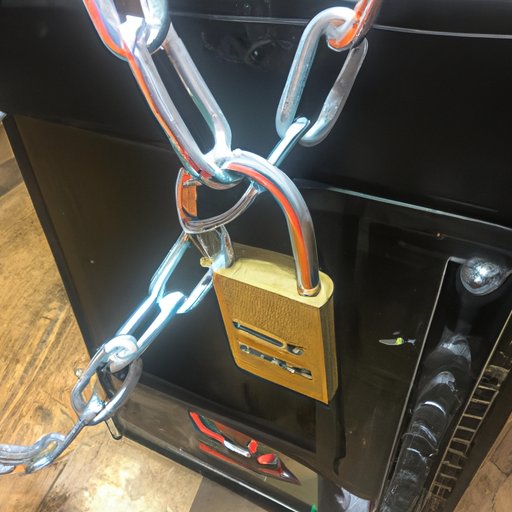Introduction
Bitcoin has become increasingly popular over the years due to its decentralized nature, low transaction fees, and relative anonymity. At the heart of this digital currency are nodes, which are computers that store and validate transactions on the Bitcoin network. In this article, we will explore what a Bitcoin node is, the benefits of running one, and how to set up and maintain a node.
What Do Bitcoin Nodes Do?
A Bitcoin node is a computer that stores a copy of the entire Bitcoin blockchain and validates new transactions on the network. The blockchain is a distributed ledger that contains a record of all Bitcoin transactions since the network’s inception. The node uses the blockchain to verify that each transaction is valid and that the sender has enough funds to complete the transaction.
Nodes also act as relays for newly broadcasted transactions by passing them on to other nodes in the network. This helps ensure that all nodes have the same view of the current state of Bitcoin. Without nodes, it would be difficult for new users to join the network and participate in the Bitcoin economy.
The main benefit of running a node is that it ensures the integrity of the Bitcoin network by verifying new transactions and helping to propagate them across the network. Additionally, running a node can be seen as a way to support the Bitcoin network and help secure it against potential attacks.

Exploring the Technological Underpinnings of Bitcoin Nodes
In order to understand how Bitcoin nodes work, it is important to explore the underlying technologies they use. These include blockchain technology, cryptography, and network protocols.
Blockchain technology is the foundation of the Bitcoin network. It is a distributed ledger that records every transaction on the network in an immutable and secure manner. Every node stores a copy of the blockchain, which allows it to validate new transactions and ensure their accuracy.
Cryptography is used to secure the Bitcoin network and protect users’ privacy. It is used to generate unique addresses for each user and encrypt the data stored on the blockchain. Additionally, cryptography is used to ensure that only the person with the private key can access their funds.
Finally, network protocols are used to communicate between nodes. These protocols allow nodes to share information and coordinate their activities on the network. Without these protocols, the Bitcoin network would not be able to function.
A Guide to Setting Up and Maintaining a Bitcoin Node
Setting up a Bitcoin node can be a daunting task, but it is relatively straightforward with the right tools. The first step is to install the necessary software on your computer. This includes the Bitcoin Core client, which is the official Bitcoin client, as well as any other software you may need to run the node.
Once the software is installed, you will need to configure the node. This includes setting up the blockchain, which can take some time depending on the speed of your computer. You will also need to configure the network settings, such as the port number and IP address.
Once the node is set up, it is important to ensure that it is secure. This includes updating the software regularly and monitoring the node for any suspicious activity. Additionally, you should use a strong password for the node and enable two-factor authentication if possible.
Finally, it is important to maintain the node by keeping the blockchain up to date and ensuring that the software is running smoothly. This means regularly checking the node for any errors and addressing them as quickly as possible.
Conclusion
Bitcoin nodes are essential to the operation of the Bitcoin network. They ensure the accuracy and integrity of the network by verifying transactions and propagating them across the network. Running a node is also beneficial to users as it helps to secure the network and provides a platform for further development.
Additionally, understanding the underlying technology of a Bitcoin node is essential for setting up and maintaining a node. This includes exploring blockchain technology, cryptography, and network protocols. Finally, setting up and securing a node requires careful consideration and regular maintenance to ensure that it is functioning properly.
Overall, running a Bitcoin node is an excellent way to contribute to the network and reap the benefits of a secure and reliable digital currency. As the Bitcoin network continues to grow, more users are encouraged to set up and maintain their own nodes.
(Note: Is this article not meeting your expectations? Do you have knowledge or insights to share? Unlock new opportunities and expand your reach by joining our authors team. Click Registration to join us and share your expertise with our readers.)
